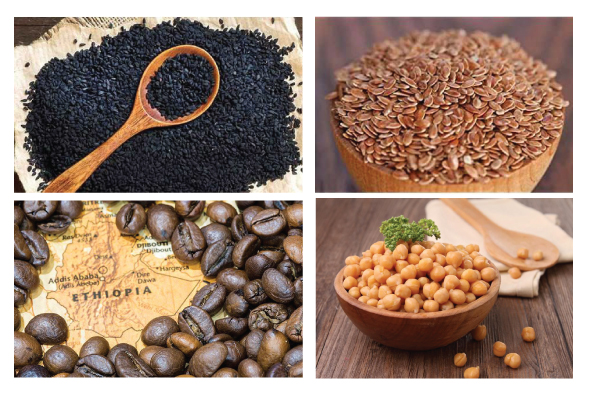
Welcome to Mintesnot Dereje Export Services!
Importing from Ethiopia is a profitable business.
Reason to choose us
Agriculture remains the Ethiopian economy’s most important sector.Ethiopia has a great agricultural potential because of its vast areas of fertile land, distinctive landscape, altitude, diverse climate, generally adequate rainfall, and large labor pool. This enables us to produce a lot of agricultural products which are different in size, colour and flavour from region to region which makes our clients come to us again and again.
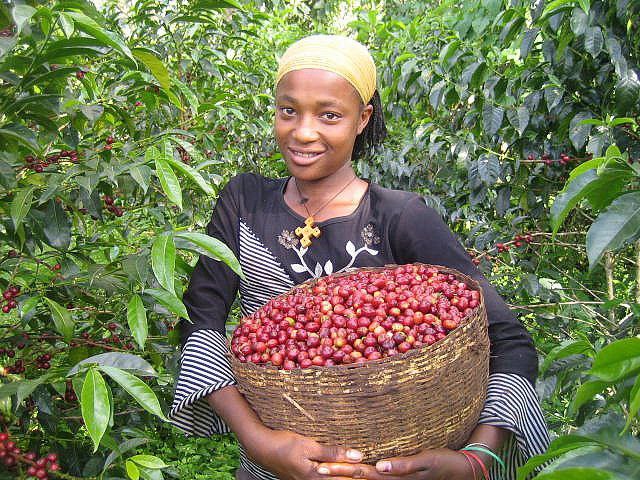
What We Export To The World

ETHIOPIAN COFFEE REGIONS & THEIR FLAVOUR PROFILES
Because Ethiopia has distinct variations in landscape and altitudes, as well as a huge range of varieties and uncategorised plants known just as heirloom, there is vast diversity in flavour among its coffees. This lack of specificity around variety means that specialty buyers differentiate coffees from Ethiopia by region, altitude, and cupping score, rather than by variety.
Here are the main Ethiopian coffee regions and associated flavour profiles.
ETHIOPIAN COFFEE REGIONS & THEIR FLAVOUR PROFILES
Because Ethiopia has distinct variations in landscape and altitudes, as well as a huge range of varieties and uncategorised plants known just as heirloom, there is vast diversity in flavour among its coffees. This lack of specificity around variety means that specialty buyers differentiate coffees from Ethiopia by region, altitude, and cupping score, rather than by variety.
Here are the main Ethiopian coffee regions and associated flavour profiles.
Sidamo
A large area in the fertile highlands in the Rift Valley, Sidamo is one of three trademarked coffee regions in Ethiopia (along with Harrar and Yirgacheffe).
It’s reported that around 60% of coffee produced here is washed processed. Sidamo coffees are known for their rich, full body, vibrant crisp acidity, and floral and citrus notes.
Workers sort green coffee at a farm in Ethiopia.
Yirgacheffe
Yirgacheffe is part of the Sidamo region, but it’s sub-divided into its own trademarked micro-region due to its exceptional coffees. Most of the coffees produced here are washed processed, although some naturals are also produced.
coffee can be characterised as a bright, medium-bodied coffee with distinct floral tones in aroma, an intense and complex flavour, flowery, medium to pointed grandly exhilarating acidity, flavour-saturated finish with good and extended aftertaste.
“The characteristics may vary from low land area to highland areas; for example, coffee produced in an elevation of 1,600 to 1,800 m.a.s.l in Chichu and Michle cooperatives is herbal in its aroma. However, coffee from Idido, Adadao, and Aramo cooperatives – produced at an elevation of 2,000 to 2,400 m.a.s.l – may exhibit a flowery aroma.”
Harrar
This is a wild Arabica that is grown on small farms in the Oromia region (formerly Harrar) at elevations between 1,400 and 2,000 metres. It is typically natural processed.
Harrar is known for its intense flavour and fruity acidity. It is described as rich and pungent with strong hints of blueberry or blackberry. It is typically heavy bodied and has been likened to dry, red wine. Its intensity means it is most commonly used in espresso blends, rather than single origin.
Limu
Limu coffee grows in the southwest of Ethiopia at between 1,100 to 1,900 m.a.s.l. A washed coffee with relatively low acidity, it has a well-balanced body and a distinct spicy flavour that is pleasantly sweet and often has floral notes.
Jimma
This region in the southwest of Ethiopia is a large producer of commercial-grade coffee. It grows at an altitude of 1,400 to 2,100 m.a.s.l. Also spelled as Djimmah, coffees from this region are reportedly best when washed and can take on a medicinal flavour if natural processed.
Paul says, “We have a honey processed coffee from Jimma, it’s my current favourite. It has some stone fruit flavours of yellow plum and apricot, some tropical flavours of mango, and some sweet citrus flavours of orange zest. A bright citric acidity and a lovely silky body holds the coffee together. The finish is clean and satisfying. I kind of love drinking this on espresso.”
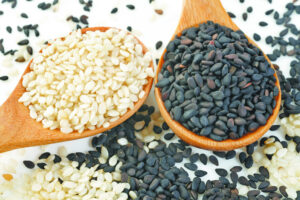
Sesame
Domestic Scenario: Ethiopia is known to be the center or origin and diversity for cultivated sesame. Sesame seed is one of the oilseed crops grown in Ethiopia. Sesame (Sesamum indicum L.) is one of the oldest cultivated plants in the world. Today, India and China are the world’s largest producers of sesame, followed by Burma, Sudan, Mexico, Nigeria, Venezuela, Turkey, Uganda and Ethiopia.
Agro-Ecological Conditions: The growth of sesame is indeterminant, as the plant continues to produce leaves and flowers so longs as the weather permits. Weighing roughly one ounce each, seeds of lighter colors are considered of higher quality. Sesame is drought tolerant though not tolerant of water logging.
While it has the potential to grow in different parts of the country, sesame grows mainly in the northern and northwestern regions of Ethiopia (Humera and Wellega). For areas with shorter rainy season periods, the planting period should fall immediately after the onset of the rainy period (June to mid-September). The planting period for areas with longer rainy seasons (late May to October) the planting period should fall in the middle of that period, during which the farmer can benefit from both the rain and sun. Additionally, sesame seed can grow well in lowland/humid areas with altitudes of up to 1,250m with preferred rainfall of 500-800mm.
In general, research result shows that, excluding the volume of grain set aside for consumption, seed and feed, 28% of total grain production (including oilseeds and pulses) is marketed, of which 40% is accounted for by oil seed crops in general.
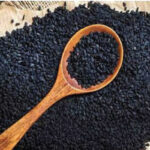
We provide high quality Ethiopia cumin to international market. We source the raw fresh Ethiopia cumin from family growers from Ethiopia.
Ethiopia black cumin (Nigella sativa), also kalonji, is one of the most common spices in the horn of Africa, with a history of enriching cuisines for generations. It is common to find the processed seed, owing to its bitter taste, in cakes, cheeses as well as chocolate products and even vegetable soups. It also features in adding aroma to food and lending good odor to certain drugs without serving as a key ingredient. In medical operations, the cumin powder sterilizes equipment. In industrial purposes, it also serves in plastic component production.
We source Ethiopia black cumin from the heart of the Southern Nations, Nationalities and Peoples region, especially in Shewa. The seed which undergoes hand-picking is roughly number two among the most popular oilseeds for spicing, after pepper, in the country. Our family growers adhere to responsible farming methods including sparing use of chemicals and commitment to application of only farm post for fertilization purposes.
Each curry serving of Ethiopia cumin consists of a very high dietary fiber concentration of over 160 percent. The vitamin C content for boosting bodily immunity against disease is 35 percent. Iron is the highest mineral for improving oxygen transportation in blood at 102 percent of the daily requirement while magnesium is second at 96 percent for boosting metabolism and improving bone structure.
Therefore, you can place an order for Ethiopia black cumin today from us while specifying your size and destination and we will readily supply. Our sizing parameters are both based on export standards and your specifications. Whether you want the seeds or the extracted oil, we guarantee quality of each as we source the raw materials from family growers with Global
Our prices are also some of the most representative in the region. Make your order today!
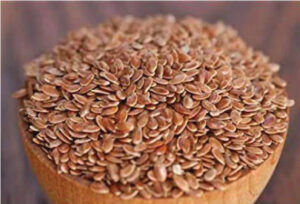
Telba ETHIOPIAN FLAX SEED
Ethiopian Flax Seeds are small oblong shiny brown seeds rich in Omega-3 essential fatty acids. Boiled in water it becomes a gelatin-like beverage popular for its health effects. Whole seeds toasted are healthy snacks or ground into powder for flavoring sauces or blended drinks.
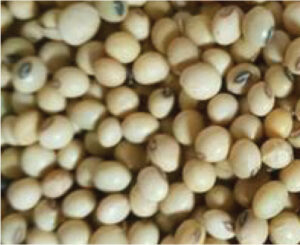
Researchers have established the crop has a lot of nutritional benefits to the body due to the huge oil and protein content contained in its dried seeds.
The uses of soya beans are numerous. It is used to manufacture animal feeds, soy milk, foods from its constituents and is also used to induce nitrogen in the soil through intercropping and improve crop yields.
It is estimated that soya bean production in Ethiopia could jump up-to approximately 120,000 from the current 5,000 metric tons in the near future as more farmers are venturing into its farming. The rapid increase is also attributed to the government’s quest to improve the production of products that are reliant on Soya beans.
Soya bean grain-Whole grain in its raw harvested form
Growing conditions
Ethiopia is ideal for the growth of the crop and especially the country’s South and Western regions where it is predominant.
Much like the ideal environmental conditions required in the growing of Ethiopia soya beans the climate conditions in those areas are cool, warm and moist with temperatures not exceeding 10°C. This is a testament to the high-quality yields that Ethiopia boasts of.
Weed is controlled every two weeks starting from the period the seed was planted. Farmers apply the hand-pulling method that involves walking all over the field while systematically pulling out weeds. It also involves cutting of weed with great caution by the use of hand tools such as machetes and knives.
Harvesting and threshing
Harvesting commences as soon as the pods dry up. Farmers use the hand harvesting method whereby they cautiously pluck one pod after the other from the stalk. It is a preferable method because the use of machines causes a lot of wastages and there is a high risk of interfering with the seed coat.
Threshing-Growers put the whole soya bean plant inside jute bags and beat open their pods which are usually already dry with a hard stick.
Farmers prefer this traditional method because it reduces seeds breakages or splits at the end of the exercise thus making them viable not only for commercial purposes but also for planting in the subsequent season.
Cleaning
After threshing farmers blow air through the soya beans in order. This exercise removes any light materials in the grain including chaff, leftover pods, and dust. Another method of cleaning the grains is where one uses a fine mesh screen with holes smaller than the grain so that any waste that is smaller in size is sieved.
Large-scale farmers use a processing plant to clean the grains in bulk whereby they ensure the cleaning machine, surge bins and conveyors are clean to avoid contamination.
Another technique is winnowing. The grains are hurled upwards, and as they fall back any unwanted material-broken seeds, lighter materials and dust are blown away. The only limitation of using this method is because heavy pieces like stones fall back in the grain while some seeds are also blown away. The grains later undergo drying to enhance their durability after storage. Small-scale farmers dry the seeds out in the sun when the humidity is comparatively low while the large-scale ones use the artificial method and ensure the temperature does not exceed 50 degrees Celsius.

Chickpea
Chickpea is the most important pulse crop in Ethiopia. The bulk of the crop variety in the country is dominated by the sweet Desi type, and the Kabuli type is also grown in limited areas. In Ethiopia chickpeas are consumed widely fresh as green vegetables, sprouted, fried roasted and boiled. It is also ground into flour to make baby feed mixed with other cereals, soup bread and meat. It is also used to rehabilitate depleted fallow lands through utilizing crop rotation system. Chickpeas in Ethiopia hold fourth in the production and area coverage in the total pulse category.
The chickpea (Cicer arietinum) is a legume of the family Fabaceae, subfamily Faboideae. Its seeds are high in protein. It is one of the earliest cultivated legumes: 7,500-year-old remains have been found in the Middle East.
Other common names for the species include garbanzo bean, ceci bean, chana, sanagalu, and Bengal gram.

Beans
The Main Varieties and Their Sources
Ethiopia common beans go into classification by color. There are red beans, white beans, green beans, navy beans, and speckled beans, each with its sub-divisions. Here is a look at the cultivars and their sources:
Red Beans: also known as ‘red mottled bean.’ Its cultivation is mainly in Oromia, Amhara and Southern Nations, Nationalities & People’s Republics (SNNPR) region. A popular subdivision is the red haricot bean.
White Beans: this is the most productive bean type by hectare with a capacity for 1.5 tons/ha. It is cream, pure white or mottled in appearance. It grows mainly in Oromia, Amhara, and SNNPR.
Red and White Beans: a cross of the purely white and red varieties, this bean type grows in the same areas as its breeding sources. It is perhaps the most common among Ethiopia common beans.
Speckled Beans: a couple of colors characterizes home to the Gofa and Sidamo zones in the country’s south, this type. The intonation ranges from grey to white, red, navy and other shades.
Small White Bean/Pea bean: some of the smallest among Ethiopia common beans are the pea beans. They are mostly white in color and minute in size. Their area of distribution is mostly Hararghe, a highland in the east of the country.
Haricot Bean: though most people call it ‘Red haricot,’ the haricot bean can be many colors. It thrives in the low-lying parts of the Great Rift Valley to the South-west. The primary colors include red, white and mottled.
Kidney Bean: this is one of the most popular bean exports from Ethiopia. It has a kidney shape, and it is mostly red. It comes from all bean-growing regions of the country.
Other Beans: the country also produces the Yellow Bean whose name derives from its color.


